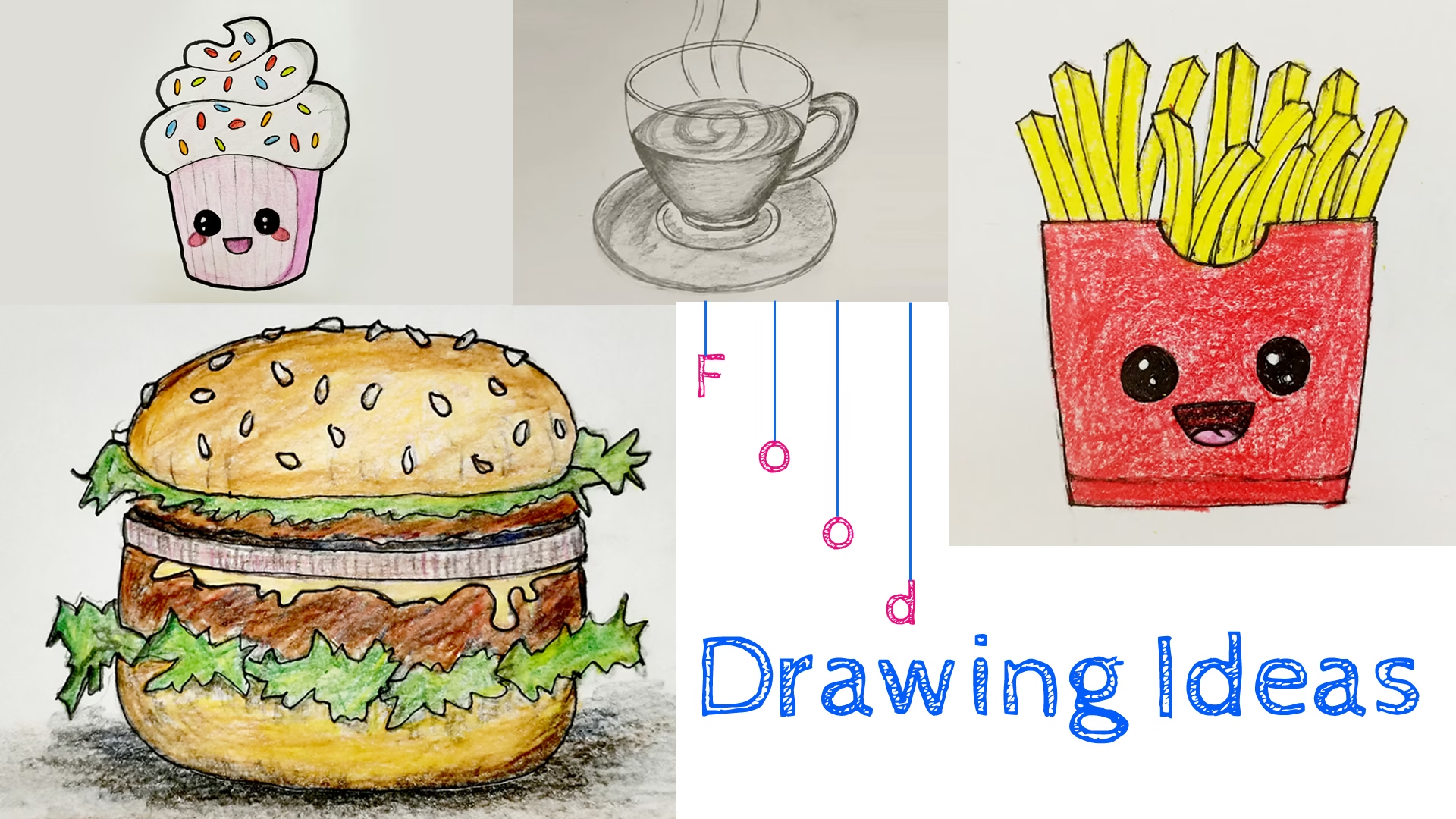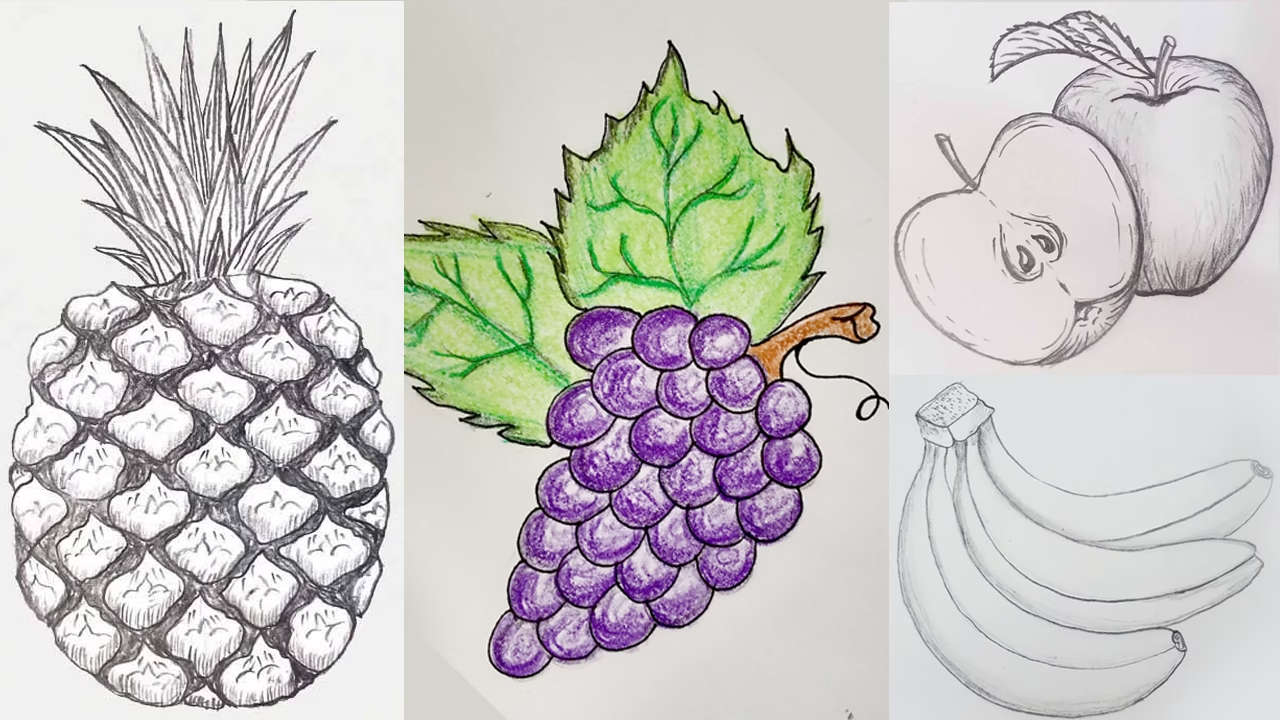
Food Drawing Ideas – A Complete Guide for Artists
Food and art have always been deeply connected. From ancient cave paintings depicting hunting scenes to modern digital illustrations of aesthetic dishes, food has been a muse for artists across generations. Food drawings not only highlight an artist’s technical skills but also evoke emotions, nostalgia, and even hunger. This article explores creative food drawing ideas, beginning with simple sketches and progressing to advanced, professional-level artwork. Whether you’re a beginner doodling in your sketchbook or an experienced artist creating hyper-realistic masterpieces, food art can be your playground of creativity. Introduction to Food Drawing Drawing food is more than just sketching an apple or a burger – it’s about capturing textures, colors, and feelings that connect viewers to the subject. Imagine looking at a drawing of a warm, cheesy pizza slice; it immediately makes you crave one. That’s the power of food art – it stirs emotions and awakens senses beyond vision. Food is also a universal subject; everyone can relate to it. Unlike complex subjects such as anatomy or architecture, food is approachable. Additionally, it offers an endless array of possibilities, including fruits, desserts, traditional dishes, beverages, and even experimental fusion foods. This makes it perfect for artists at any stage of their journey. Why Food Drawing is Popular in Art Food drawings have surged in popularity because of their versatility. Social media platforms like Instagram, Pinterest, and TikTok are filled with artists showcasing food sketches, realistic drawings, and even digital art versions of meals. These artworks often go viral because they combine familiarity (who doesn’t love food?) with creativity. Food drawings also make excellent practice material for learning shading, perspective, and coloring since they involve a variety of textures – smooth apples, flaky pastries, glossy ice creams, or crispy fried items. The Connection Between Food and Creativity Food and art share one core element: creativity. Just as chefs experiment with flavors and presentation, artists explore shapes, colors, and styles. For instance, drawing sushi rolls requires attention to detail, balance, and composition, much like preparing the actual dish. Similarly, sketching desserts like cupcakes or macarons allows for playful experimentation with colors and textures. Many artists even combine food with fantasy, drawing surreal, floating pizzas or magical coffee cups, pushing the boundaries of both art and imagination. Getting Started with Food Drawing Before diving into complex sketches, it’s important to gather the right tools and mindset. Drawing food doesn’t require expensive supplies, but having the right setup makes the process smoother and more enjoyable. Essential Drawing Supplies for Food Art At the most basic level, you’ll need some essential drawing supplies as listed below: If you’re working digitally, programs like Procreate, Photoshop, or Clip Studio Paint provide brushes that mimic traditional mediums, giving you flexibility in style. Choosing the Right Medium (Pencil, Ink, Digital, etc.) The medium you choose greatly affects your artwork’s mood and appearance: Choosing the right medium depends on your comfort and the style you want to achieve. For instance, if you’re aiming for realism, colored pencils or digital tools might serve you best. But if you prefer a playful, sketchy look, ink or watercolor works wonders. Tips for Beginners in Food Drawing Remember, practice is key. The more you sketch, the more natural food drawing will feel. Simple Food Drawing Ideas for Beginners If you’re new to food art, the best way to build confidence is to start small. Begin with foods that have simple shapes and fewer details. This helps you focus on proportion, shading, and texture without getting overwhelmed. Fruits – The Best Starting Point Fruits are ideal for beginners because they’re naturally colorful, familiar, and easy to break down into shapes. For example: While simple, fruits allow you to experiment with shading and highlights. A shiny apple, for instance, teaches you how light reflects on smooth surfaces, while an orange helps you practice rough textures. Drawing Everyday Snacks and Desserts Snacks and desserts make fun drawing subjects because they’re visually appealing and packed with details. Think about: These items let you explore textures like crumbs, frosting swirls, and melting effects. Plus, they’re universally loved – making your drawings instantly engaging. Easy Drinks and Beverages to Sketch Drinks are also great for beginners since they usually involve simple shapes like cylinders or rectangles. Examples include: Adding elements like straws, foam, or condensation on the glass allows you to practice details without the pressure of complex shapes. Intermediate Food Drawing Ideas Once you’ve mastered basic foods, it’s time to challenge yourself with more complex subjects. Intermediate drawings often involve cooked meals, layered dishes, and more textures that require attention to detail. Drawing Cooked Meals and Dishes Think about meals like: These dishes teach you how to handle multiple textures in one composition – smooth noodles, glossy broth, leafy greens, and meaty textures. The challenge is to make each element stand out while keeping the dish harmonious. Exploring Different Cuisines Through Art Food is also a cultural journey. Drawing dishes from around the world not only improves your artistic skills but also broadens your knowledge. Examples include: Each cuisine has unique elements that challenge your ability to capture detail, such as the delicate rice grains in sushi or the flaky layers of a croissant. Adding Realism with Shadows and Textures To elevate your drawings, focus on shadows, highlights, and surface details. A donut, for example, isn’t just a circle – it has a golden-brown texture, a soft inside, and glossy icing that reflects light. Shadows under food items add depth and make them pop off the page, while textures help them look more realistic. FAQs Q1: What is the easiest food to start drawing as a beginner? The easiest foods to start with are fruits like apples, bananas, and oranges since they have simple shapes and allow you to practice shading and highlights. Q2: How can I make my food drawings look realistic? Focus on details like textures, shadows, and reflections. Using reference photos and studying how light interacts with food will also make your art look



